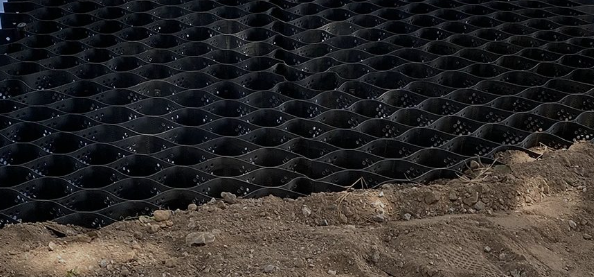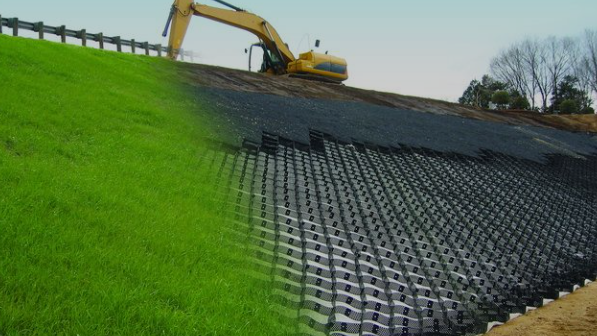- Understanding the Role of Geomembrane Liners in Waste Management
- Innovations in Geomembrane Liners for Water Management
- Geomembrane Liners: A Comprehensive Guide
- The Future of Geomembrane Liners in Civil Engineering
- Geomembrane Liners: Enhancing Landfill Stability
Manager:Alvin Wang
WhatsApp:+62 8983806051
Tel:+86 10-5797-1075
Email:steelwang@okorder.com
Address:3rd Floor, No.2 Building, No.1 Sanlihe Road
What are geocells made up of?
Geocell slope protection has emerged as a pivotal solution in civil engineering, particularly in safeguarding slopes from erosion, landslides, and other environmental hazards. Integral to this innovative approach is the geocell itself – a versatile structure engineered to provide stability and reinforcement to various soil types. But what exactly are geocells made up of, and how do they contribute to slope protection? Let's delve into the composition and functionality of geocells to understand their role in slope protection strategies.

Understanding Geocells:
Before delving into their composition, it's crucial to grasp the fundamentals of geocells. Essentially, geocells are three-dimensional honeycomb-like structures manufactured from high-density polyethylene (HDPE) or polypropylene (PP) materials. These materials are selected for their durability, flexibility, and resistance to environmental degradation, making them ideal for civil engineering applications.
Composition of Geocells:
1. Polymeric Sheets:
Geocells primarily consist of interconnected polymeric sheets, forming a lattice-like framework. These sheets are typically made from HDPE or PP, chosen for their strength and resilience. The sheets are welded or bonded together to create a grid pattern, resulting in the characteristic honeycomb structure of geocells.
2. Cell Walls:
The interconnected polymeric sheets form individual cells with defined walls. These cell walls are crucial for confining and stabilizing soil within the structure. The thickness and density of the cell walls can vary depending on the specific requirements of the slope protection project.
3. Perforations:
To facilitate drainage and promote vegetation growth, geocells often feature perforations or apertures along the cell walls and base. These perforations allow water to permeate through the structure, reducing hydrostatic pressure and preventing water buildup behind the slope protection geocell.
4. Textured Surface:
Some geocells may incorporate textured surfaces on the cell walls and base to enhance soil retention and interlocking. The texturing provides additional frictional resistance, preventing soil particles from shifting or eroding under external forces.
Functionality of Geocells in Slope Protection:
1. Soil Confinement:
One of the primary functions of geocells in slope protection is soil confinement. By confining soil within the interconnected cells, geocells prevent erosion and slope instability. The confined soil mass acts as a cohesive unit, resisting gravitational forces and minimizing the risk of landslides.
2. Reinforcement:
Geocells reinforce the soil structure by distributing applied loads more uniformly. The interconnected cells create a composite system that enhances the overall strength and stability of the slope. This reinforcement effect is particularly beneficial in areas with weak or unstable soil conditions.
3. Vegetation Support:
Geocells provide an ideal environment for vegetation growth, further enhancing slope stability and erosion control. The perforations in the geocell walls allow roots to penetrate the soil, anchoring vegetation and establishing a natural cover that reduces surface runoff and soil erosion.
4. Hydraulic Performance:
Through their perforated design, geocells improve the hydraulic performance of slopes by promoting effective drainage. Excess water is able to drain freely through the geocell structure, reducing the risk of saturation-induced failures and maintaining slope integrity even in rainy conditions.

Conclusion:
In conclusion, geocells are an essential component of slope protection strategies, offering a versatile and effective solution for mitigating erosion, landslides, and other slope hazards. Composed of high-density polyethylene or polypropylene materials, geocells provide soil confinement, reinforcement, vegetation support, and improved hydraulic performance. By understanding the composition and functionality of geocells, engineers and planners can harness their potential to create resilient and sustainable slope protection systems."






